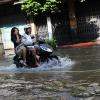
Disaster Risk Reduction investments bring a wide variety of benefits, including economic, ecological, and social, but in practice these multiple resilience dividends are often not included in investment appraisals or are not recognized by those making funding decisions. How do we change this?
Research led by the London School of Economics and Political Science with IIASA and Practical Action published in the Working Paper Multiple resilience dividends at the community level: A comparative study on disaster risk reduction interventions in different countries highlights the need for an integrated decision-making framework to overcome the challenges.
The negative effects of disasters on people and communities are varied and far reaching, and will only get worse as climate change make floods and other natural hazards more frequent, severe, and unpredictable. Disasters lead to loss of lives, assets, and livelihoods, they undermine or destroy development progress. Since 2000 climate related hazards have caused $2.2 trillion of losses and damages and have affected approximately 3.9 billion people globally.
With investments in disaster risk reduction (DRR), where community resilience is enhanced these negative impacts can be reduced and savings can be made. It’s more cost effective to invest in pre-event resilience than post-event response and recovery.
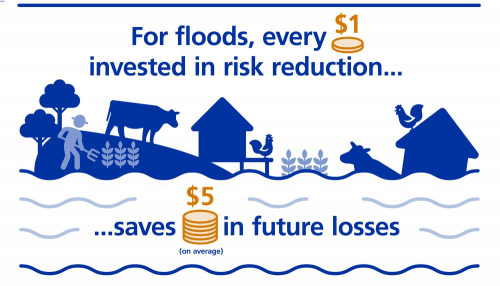 © IIASA
© IIASA
So why is disaster risk reduction so difficult to finance?
The problem with estimating the direct benefit of disaster risk reduction interventions is that you only see the benefits when an event which would otherwise have turned into a disaster occurs and is successfully mitigated.
This makes cost-benefit analysis and other decision-making methods difficult to carry out, and makes the costs of doing something more aligned to the probability of the event, rather than the lives and economic costs saved, thus changes to policy and practice are slow to materialize.
What are the multiple dividends of resilience?
The multiple dividends of resilience refer to positive socioeconomic outcomes generated by, and co-benefits of, an intervention beyond, and in addition to, risk reduction.
It’s an approach aimed at making DRR investments more attractive as the multiple dividends of an investment may help identify win-win-win situations (as well as trade-offs), even if no hazard event occurs. Co-benefits can be intended, or unintended.
As framed by the Triple Resilience Dividend concept these benefits can be divided into three categories:
1. The avoided losses and damages in case of a disaster
For example, how bio-dykes in Nepal prevent river bank erosion, which reduces the risk of flooding, and associated sand deposits that ruin the fertility of agricultural land.
2. The economic potential of a community that is unlocked through the intervention
This includes ecosystem-based adaptation solutions in Vietnam where mangrove plantations create new habitats for fish, leading to improved livelihood opportunities for those making their living from fishing.
3. Other development co-benefits
Transition to solar stoves in rural Afghanistan does not only protect natural capitals from degradation, but also empowers women and girls, reduces in-house smog pollution, and fosters technological innovations.
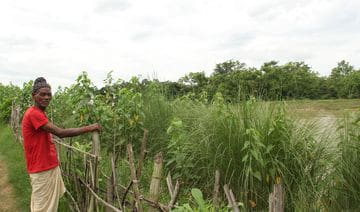 © Sanjib Chaudhary, Practical Action.
© Sanjib Chaudhary, Practical Action.
What are the challenges?
The triple resilience dividend approach is often linked to new and innovative solutions like ecosystem based adaptation, where the benefits can be wider, but when and how they will materialize is more uncertain than with traditional, hard infrastructure solutions.
Although many developing countries have policies that align DRR, climate change adaptation, and sustainable development, sadly, in practice, local decision makers assume that multiple resilience dividends will only accumulate over the long term. This often leads them to select traditional, hard infrastructure solutions that offer quick and more visible protection.
We need more success stories. Pilot interventions can be shared and shown to community members and decision makers to overcome their skepticism but this require better and more comprehensive evidence than we have today.
We also lack decision-making frameworks that can include and monitor multiple resilience dividends. Frameworks that support planners as they navigate the decision-making process, and help generate the evidence needed.
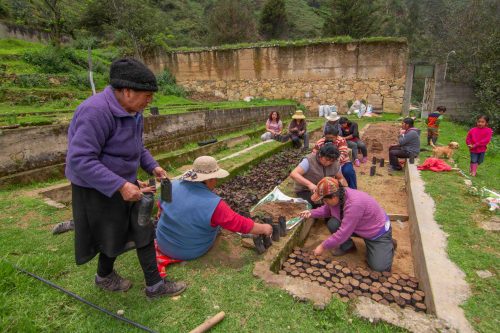 © Giorgio Madueño , Practical Action
© Giorgio Madueño , Practical Action
How do we overcome these challenges?
The solution suggested in Multiple resilience dividends at the community level: A comparative study on disaster risk reduction interventions in different countries is an integrated decision-making framework that allows to systematically include, appraise, implement, and evaluate individual resilience dividends at each stage of the decision-making process.
Application and relevance matters.
As we suggest, instead of maximizing resilience dividends based on a specific, one dimensional, metric (e.g., monetary benefits) decision-making approaches need to identify those dividends that are most needed and demanded by the community and the solutions, novel or local in nature, best suited to generate these.
A structured approach in combination with participatory decision making allows for a tailored approach where community buy-in is achieved by prioritizing the resilience dividend(s) that matter most to them, while at the same time contributing to the evidence base for multiple resilience dividends.
This is urgently needed to highlight the fundamental challenges with the existing planning and decision-making system and therefore generate demand to deliver more effective solutions at scale.
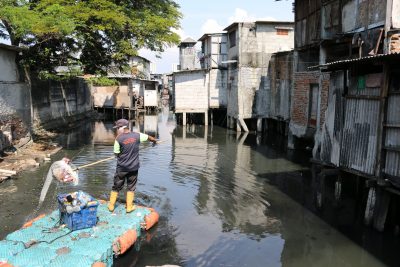 © Piva Bell, Mercy Corps
© Piva Bell, Mercy Corps
Read the working paper this blog is based on here.
This blog post first appeared on the Flood Resilience Portal. Read the original post here.
Note: This article gives the views of the author, and not the position of the Nexus blog, nor of the International Institute for Applied Systems Analysis.